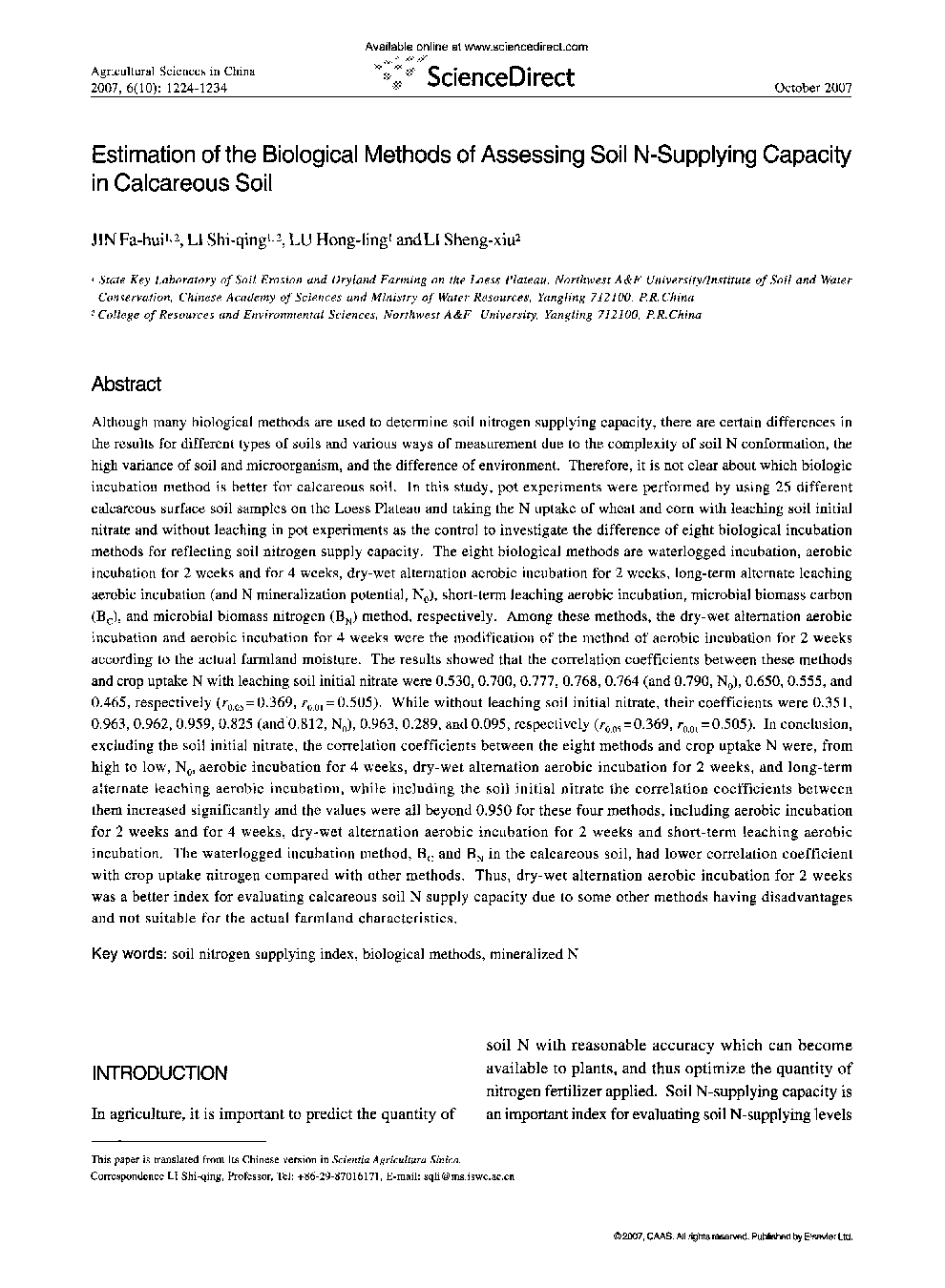| کد مقاله | کد نشریه | سال انتشار | مقاله انگلیسی | نسخه تمام متن |
|---|---|---|---|---|
| 4490744 | 1317786 | 2007 | 11 صفحه PDF | دانلود رایگان |

Although many biological methods are used to determine soil nitrogen supplying capacity, there are certain differences in the results for different types of soils and various ways of measurement due to the complexity of soil N conformation, the high variance of soil and microorganism, and the difference of environment. Therefore, it is not clear about which biologic incubation method is better for calcareous soil. In this study, pot experiments were performed by using 25 different calcareous surface soil samples on the Loess Plateau and taking the N uptake of wheat and corn with leaching soil initial nitrate and without leaching in pot experiments as the control to investigate the difference of eight biological incubation methods for reflecting soil nitrogen supply capacity. The eight biological methods are waterlogged incubation, aerobic incubation for 2 weeks and for 4 weeks, dry-wet alternation aerobic incubation for 2 weeks, long-term alternate leaching aerobic incubation (and N mineralization potential, No), short-term leaching aerobic incubation, microbial biomass carbon (Bc), and microbial biomass nitrogen (BN) method, respectively. Among these methods, the dry-wet alternation aerobic incubation and aerobic incubation for 4 weeks were the modification of the method of aerobic incubation for 2 weeks according to the actual farmland moisture. The results showed that the correlation coefficients between these methods and crop uptake N w with leaching soil initial nitrate were 0.530, 0.700, 0.777, 0.768, 0.764 (and 0.790, N0), 0.650, 0.555, and 0.465, respectively (r0.05 = 0.369, r0.01 = 0.505). While without leaching soil initial nitrate, their coefficients were 0.351, 0.963, 0.962, 0.959, 0.825 (and 0.812, N0), 0.963, 0.289, and 0.095, respectively (r0.05 = 0.369, r0.01=0.505). In conclusion, excluding the soil initial nitrate, the correlation coefficients between the eight methods and crop uptake N were, from high to low, N0, aerobic incubation for 4 weeks, dry-wet alternation aerobic incubation for 2 weeks, and long-term alternate leaching aerobic incubation, while including the soil initial nitrate the correlation coefficients between them increased significantly and the values were all beyond 0.950 for these four methods, including aerobic incubation for 2 weeks and for 4 weeks, dry-wet alternation aerobic incubation for 2 weeks and short-term leaching aerobic incubation. The waterlogged incubation method, BC and BN in the calcareous soil, had lower correlation coefficient with crop uptake nitrogen compared with other methods. Thus, dry-wet alternation aerobic incubation for 2 weeks was a better index for evaluating calcareous soil N supply capacity due to some other methods having disadvantages and not suitable for the actual farmland characteristics.
Journal: Agricultural Sciences in China - Volume 6, Issue 10, October 2007, Pages 1224-1234